Hello there, my name's Siang Tuck. This will be a blog dedicated to postings related to my university subject #MDA20009 Digital Communities. Feel free to sit back relax and grab a coffee while your at it!
Don't wanna be here? Send us removal request.
Text
Week 12: Crowd sourcing in times of crisis
Social media news outlets, citizen journalism, or even using GPS applications such as Waze to head towards your favourite destination. These are but the many examples of crowd sourcing, However, do we really understand how it's really used when it's needed? In my final posting for my mini Tumblr blog adventure, let's take a look at what crowd sourcing really is and how it's used in times of crisis. 🏃

The simple definition of crowdsourcing can be understood as Hargrave (2022) defines it as the gathering of information from large groups of user. With the introduction of technology, a primary example of how crowd sourcing is useful would be the implementation of it during the crisis of Covid-19. Studies by Vermicelli, Cricelli, and Grimaldi (2020) notes how effective of a strategy it is to harness the power of online communities and distribute them globally across various domains by offering accessible, and rapid answers to solutions. The authors further note the usage of initiatives such as TopCoder, Openinnovability, NineSigma, etc are great crowdsourcing platforms providing insights for users to keep them engage and raise awareness about the ongoing issues related to Covid-19.

Other research by Riccardi (2016) suggests that crowdsourcing provides a sense of control for victims during crisis management. The author explained that if a person were affected by a certain incident, they would likely contact disaster managers or emergency services to update them about their current situation whether in terms of safety, food shortages, water and fire damages, etc through establishing it as a coping mechanism by "controlling" the situation. In a summary, the term crowdsourcing not only applies traditionally but digitally as well. Recent examples of Covid-19 highlight it's importance as initiatives were created with a sole purpose of gathering online data and help victims to actively engage with one another to keep their spirits high. While keeping a cool head is always a good thing we understand that thanks to crowdsourcing, a sense of control is there as victims use it for a coping mechanism during times of crisis. On that note, my mini Tumblr journey has come to an end. I hope everyone had a blast reading through my discussions, and I can't wait to what new adventures await! 💪 References Hargrave, M. (2022). Crowdsourcing: Definition, How It Works, Types, and Examples. Investopedia. https://www.investopedia.com/terms/c/crowdsourcing.asp Riccardi, M. T. (2016). The power of crowdsourcing in disaster response operations. International Journal of Disaster Risk Reduction, 20, 123–128. https://doi.org/10.1016/j.ijdrr.2016.11.001 Vermicelli, S., Cricelli, L., & Grimaldi, M. (2020). How can crowdsourcing help tackle the COVID‐19 pandemic? An explorative overview of innovative collaborative practices. R&D Management, 51(2). https://doi.org/10.1111/radm.12443
0 notes
Text
Week 11: Digital Citizenship and Conflict: Social Media Governance
It's that time again for my tumblr rambling session. Social media governance sounds very complex, but have you ever wondered what it actually means? As responsible fellow digital citizens, let's take a look at what impact this brings, why some content may or may not be accessible to the general public, and what we can do to hopefully put an end to it. 👀
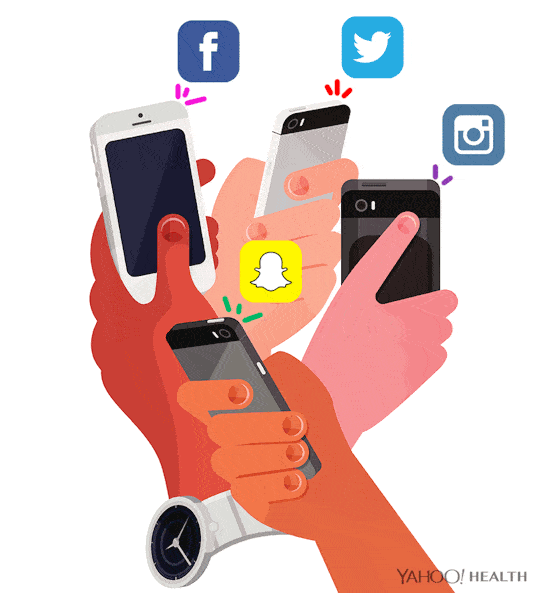
Digital citizenship can be best described from my previous postings regarding how online users such as ourselves portray in the digital world. Being ethical and responsible is important as first impressions play a key part in how other people view us on social media and how we actively engage with others online. Council of Europe (2014) further explains how it is the "capacity to participate actively, continuously and responsibly in communities online and offline, through competent and positive engagement with digital technologies". With this in mind 💭 social media governance comes into play as Murthy (2024) provides a definition for the term calling it a structured framework that segregates rules for businesses and content on social media to help provide an understanding and mitigate the risks associated with social media. Linke and Zerfass (2013) mention how the concept of social media governance can introduce online communication methods to help supervise any form of media that is shared online.

With this comes any form of negative content, such as hate speech, cyberbullying, or deceptive and sarcastic messages aimed at bringing down other people. Lee (2025) notes how the implementation of technology has evolved and is used in our everyday lives could lead to the spread of negative or demotivating content such as misinformation, hate speech, and online harassment, as we are now exposed to social media more than ever. The author mentions to ensure the favour of public interest is needed as effective governance of social media helps address any issues related to it. In conclusion, social media governance plays a vital role in how media is shaped and fed to us as any form of negative content is strictly disallowed and guarded. It is our responsibility as fellow digital citizens to help practice in engaging with others responsibly as we never know when our actions might have consequences while creating and sharing content ethically could help spread awareness and advocate for social causes while fostering a positive digital community. References Council of Europe. (2014). Digital Citizenship Education - Education - www.coe.int. Education. https://www.coe.int/en/web/education/digital-citizenship-education# Lee, S. (2025). Social Media Governance 101. Numberanalytics.com. https://www.numberanalytics.com/blog/social-media-governance-101 Linke, A., & Zerfass, A. (2013). Social media governance: regulatory frameworks for successful online communications. Journal of Communication Management, 17(3), 270–286. https://doi.org/10.1108/jcom-09-2011-0050 Murthy, S. (2024). Social Media Governance: 9 Essential Components. Www.sprinklr.com. https://www.sprinklr.com/blog/social-media-governance/
0 notes
Text
Week 10: Gaming Communities, Social Gaming and Live Streaming: Twitch
Remember the time when you'd get home from school and hop onto your favourite games like Minecraft, Roblox, Overwatch, etc with your buddies beating quests together and playing until dinner time? As we grow up, moments like these tend to occur less but the memories we made along the way with friends and communities will always be remembered. Let's take a deep dive for today's topic and understand the importance of gaming communities, social gaming, and live streaming! 🎮
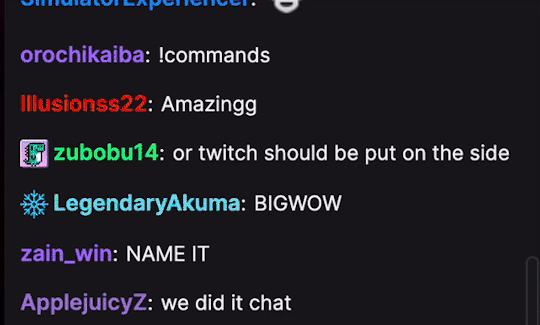
Firstly, let's take a look at a brief history of video games, as Tretkoff (2008) pays tribute to Physicist William Higinbotham, who is credited with creating the first game called "Tennis for Two" in 1958. Emphasizing the need for two players to play, a love for video games started to exist and gaming communities soon emerged along with it. Wu and Chang (2025) suggested how these communities welcome users with open arms and provide discussions and support for them as the sense of belonging is created which helps positively impact self-awareness. Davis (2019) also mentions how feelings of inclusion can be created as joining a schools esports team helps bring acceptance between other members and experiences in the games they are playing. However the author also notes that excessive playtime can also lead to negative academic outcomes taking a toll on their health.

Example of a successful social game would definitely be Minecraft released in 2009. Statista (2022) mentions how the game has sold more than 300 million copies in 2023 making it one of the most popular games in the world. Gonçalves et al. (2023) state how the implication of technology has helped users all across the globe to engage with one another. Without a doubt the word "social" in social gaming brings in communities with similar interests to create memorable moments thanks to the advancements of technology.

Let's not forget about live streaming platforms like Twitch as Navigil (2024) notes how Twitch as a platform plays a vital role in shaping the esports industry by bringing inclusion and diversity. The author used the TwitchCon event as an example of how it features panels and workshops for gamers alike to have fun which in return not only spreads awareness of Twitch itself but also brings inclusivity within the gaming industry. Simmons (2021) mentions how Twitch includes tags making it easily accessible for users to find streamers with similar interests and mentions how the platform has also created a community of gamers with passion and how it's inspiring a new generation of game industry workers. In a summary, video games provides users with their own personal space where they are able to game, engage, and communicate with others as the example of Minecraft can be best described how social gaming brings inclusivity as these gaming communities provide acceptance and self-awareness. Other platforms such as Twicth fall under the category as have created and inspire people to fall in love with gaming. References clement, j. (2022, August 2). Minecraft unit sales worldwide 2019. Statista. https://www.statista.com/statistics/680124/minecraft-unit-sales-worldwide/ Davis, C. (2019). Why Esports in Schools Is a Good Thing | ViewSonic Library. ViewSonic Library. https://www.viewsonic.com/library/education/esports-schools-good/ Gonçalves, D., Pais, P., Gerling, K., Guerreiro, T., & Rodrigues, A. (2023). Social gaming: A systematic review. Computers in Human Behavior, 147(147), 107851. https://doi.org/10.1016/j.chb.2023.107851 Navigli, A. (2024). Beyond gaming: how Twitch is shaping esports and community dynamics - LuissThesis. Luiss.it. http://tesi.luiss.it/40175/1/275071_NAVIGLI_ALESSIA.pdf Simmons, F. (2021). For better or worse? How has Twitch Influenced the Games Industry? [Review of For better or worse? How has Twitch Influenced the Games Industry?]. Skillsearch. https://www.skillsearch.com/news/item/has-twitch-influenced-the-games-industry- Tretkoff, E. (2008). October 1958: Physicist Invents First Video Game. Www.aps.org. https://www.aps.org/apsnews/2008/09/first-video-game Wu, C., & Chang, C.-H. (2025). How multiplayer online games can yield positive effects on individual gamers, gaming companies, and society as a whole. Humanities and Social Sciences Communications, 12(1). https://doi.org/10.1057/s41599-025-04690-6
0 notes
Text
Week 9: Digital Citizenship and Software Literacy: Instagram Filters
Why spend hours applying makeup when your smartphone can do it in a few seconds. Let's take a look at the impacts of augmented reality and how software literacy has allowed users to use Instagram filters to portray ourselves in the online world shall we?

Augmented reality (AR) can be best described as combining both virtual and real-world information collectively as one. Chen et al. (2019) mention how technology has thrived and allowed 3D-Modelling, Real-time tracking and Registration, Intelligent Interaction, and Sensing to be generated for us. Data by Statista (2024) highlights that there are 2 billion monthly users on Instagram. showcasing the importance of software literacy. Khoo and Hight (2017) described the term as "A person’s expertise in understanding, applying, problem solving and critiquing software in pursuit of particular learning and professional goals". This suggests we have known social media for long periods of time to the point where we get used to it.

Speaking of augmented reality, one prominent feature on Instagram that utilizes it is filters as Bhatt (2020) mentions how 600 million users use AR effects on both Facebook and Instagram. Research by Javornik etal. (2022) note that the primary motivation for the usage of AR filters is due to social engagement as this can be related to digital citizenship as it plays a role in how we portray ourselves and engage in the online world. The authors further mentioned how self-presentation also plays a part as users tend to seek validation from others online. Other research by Dijkslag et al. (2024) supports this claim with suggesting how these beautifying filters may lead to a negative impact on body satisfaction as social norms and beauty standards have become unrealistic. Studies by Gill (2020) from the University of London highlight how 94% of respondents felt pressured to look a certain way while 60% say they feel depressed as a result.

In conclusion, augmented reality has allowed social media platforms such as Instagram shape the way we consume and engage with media as filters have not only provided a platform for users to engage with one another on topics they are interested in but have set an unrealistic perception in beauty standards leading to issues related to body satisfaction and positivity. It is the responsibility of digital citizens to critically view filtered content and advocate for transparency as this helps to create a more healthy digital space for users alike.
References Bhatt, S. (2020). The big picture in the entire AR-filter craze. The Economic Times. https://economictimes.indiatimes.com/internet/brands-see-the-big-picture-in-ar-filter-craze/articleshow/78266655.cms?from=mdr Chen, Y., Wang, Q., Chen, H., Song, X., Tang, H., & Tian, M. (2019). An overview of augmented reality technology. Journal of Physics: Conference Series, 1237(2), 022082. https://doi.org/10.1088/1742-6596/1237/2/022082 Dixon, S. J. (2024). Instagram - statistics & facts. Statista. https://www.statista.com/topics/1882/instagram/#topicOverview Gill, R. (2020). Changing the perfect picture: Smartphones, social media and appearance pressures. https://www.citystgeorges.ac.uk/__data/assets/pdf_file/0005/597209/Parliament-Report-web.pdf I.R. Dijkslag, L. Block Santos, Irene, G., & Ketelaar, P. (2024). To beautify or uglify! The effects of augmented reality face filters on body satisfaction moderated by self-esteem and self-identification. Computers in Human Behavior, 159, 108343–108343. https://doi.org/10.1016/j.chb.2024.108343 Javornik, A., Marder, B., Barhorst, J. B., McLean, G., Rogers, Y., Marshall, P., & Warlop, L. (2022). “What lies behind the filter?” Uncovering the motivations for using augmented reality (AR) face filters on social media and their effect on well-being. Computers in Human Behavior, 128(107126), 107126. https://doi.org/10.1016/j.chb.2021.107126 Khoo, E., & Hight, C. (2017). Software Literacy. https://doi.org/10.4018/978-1-5225-2255-3.ch656
1 note
·
View note
Text
Week 8: Digital Citizenship and Health Education: Body Modification on Visual Social Media
Hello there and welcome back to yet another tumblr post by me! In today's topic, we're gonna dive into digital citizenship and health education as we take a deep dive into body modification in a digitalised world.

Social media is prominent all around us as I'm sure that everyone nowadays uses a smartphone to connect and engage with one another. This highlights the importance of digital citizenship as Henriques and Patnaik (2020) note how an increase of body modification can be seen due to popular social media platforms with examples of tattoo searches and other body modification procedures which especially on consumers with the majority being young adults. The authors also show an example of a survey conducted in an American university with findings of body piercings in 42% of men and 60% in women.

Implications for public health can be brought to light as Mironica et al. (2024) mention self-body dissatisfaction and anxiety for social appearances have been on the rise due to the standards and cultural norms that have been set by influencers and social media's standards. The constant quest for the perfect skinny lean physique can cause negative thoughts, which can lead to a shift in eating habits, increasing the likelihood of weight difficulties and eating disorders – which are no longer the biggest concern of women due to the burning obsession to attain a “perfect” appearance (grumpychipp, 2023). Some ethical considerations should be raised related to deceptive advertising and unrealistic beauty standards. It emphasizes the necessity of a healthy body image and supports informed decision-making in a digitalised world with users using hashtags such as #RealBodiesMatter and #SocialMediaVsReality to start social movements.
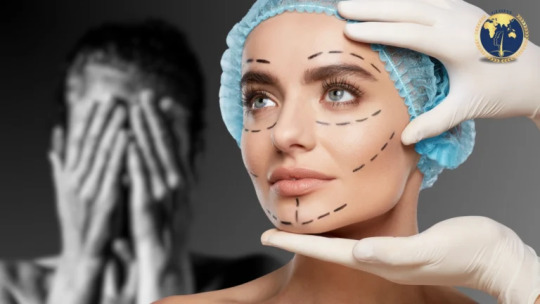
Examples of body modification would be the usage of plastic surgery as Statista (2025) mentions how countries such as the United States, Brazil, and Japan consist the most plastic surgeons with more than 3000 minimum. American Society of Plastic Surgeons (2022) released their 2023 article along with statistics highlighting an increase of 70,000 participants for plastic surgery procedures when compared to the previous year totaling to an amount of 1,575,244 which helps the understand the impact of how visual social media shapes beauty perceptions. In a summary, visual social media plays a major role in shaping beauty perceptions to a fault as users use body modifications such as tattoos and plastic surgery to achieve their views of unrealistic standards based on the media they consume. Ethical considerations come into play as social movements could shed light on the importance of self-love as prioritizing your own happiness could help stop seeking validation from others. References American Society of Plastic Surgeons. (2022). American Society of Plastic Surgeons. American Society of Plastic Surgeons. https://www.plasticsurgery.org/news/plastic-surgery-statistics grumpychipp (2023). Body modification vs. social media: Is there any connection?. Spiderum. https://spiderum.com/bai-dang/Body-modification-vs-social-media-Is-there-any-connection-HUk3sCwKK5l1 Henriques, M., & Patnaik, D. (2020). Social media and its effects on beauty. In www.intechopen.com. IntechOpen. https://www.intechopen.com/chapters/73271 Mironica, A., Popescu, C. A., George, D., Tegzeșiu, A. M., & Gherman, C. D. (2024). Social Media Influence on Body Image and Cosmetic Surgery Considerations: A Systematic Review. Cureus, 16(7). https://doi.org/10.7759/cureus.65626 Yang, J. (2025).Countries with the highest number of plastic surgeons in 2023. Statista. https://www.statista.com/statistics/293331/leading-countries-by-number-of-plastic-surgeons/
#digital communities#mda20009#body modification#body mods#health education#social movements#beauty standards#digital citizenship
0 notes
Text
Week 7: Digital Citizenship Case Study: Social Media Influencers and the Slow Fashion Movement
Hello there! It seems that you have stumbled upon yet another Tumblr post by me! Relating back to digital citizenship in the previous post, let's look at the impact of social media influencers and what slow fashion is, shall we?
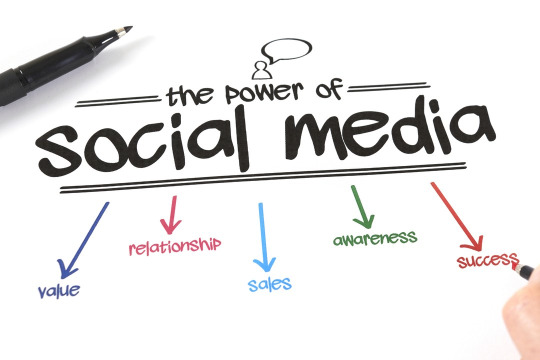
To provide a quick recap on what digital citizenship is, Gleason and Gillern (2018) note that the term is a concept used for "theoretical conceptions, from those that emphasize the technological aspect, while others investigate the affordances of digital media to suggest new forms of citizenship". We can understand the importance of having a digital space in today's society as Farooq et al., (2021) note the ever-expanding social media has become popular during recent times by providing a platform for users to achieve effective communication whether it be regular conversations or when you require support from your closed ones even when they are halfway across the globe. Recent charts by Statista (2025) show the prominence of how there are 5.56 billion internet users and 5.24 billion social media users. To understand the role of social media influencers in the digital space, Rokhadi (2023) mentions how they can influence the public by being a factor in decision-making when it comes to demand and supply. Websites such as ManoByte (2015) provide a brief explanation of how social media influencers can alter beliefs by connecting with the audience, being a citizen journalist and sharing news, shaping opinions altogether. This means they act as opinion leaders and role models worthy of being idolised as the media they share can alter their followers' beliefs so long as it spreads positivity or awareness as it relates to how digital citizenship allows users to connect with one another respectively.

This brings us to slow fashion as Forbes (2015) notes that it is a movement related to the opposite of what fast fashion stands for by taking quality over quantity into consideration to create timeless pieces that will last and are trendy which helps reduce waste and is respectful to the environment. Birmingham City University (2019) provided a list of successful social media influencers that promote sustainable fashion such as Emma Slade Edmonson, Dominique Drakeford, and Venetia LaManna as she can be used as an example where the website CORQ (n.d.) highlighting her achievements such as the 1.9 million viewer count related to a pancake tutorial a few years back discussing the treatment of garment workers in Adidas or the mention of the fast fashion company Shein in a French toast video which had been viewed 724,000 times. In conclusion, social media acts as a platform by allowing users to engage with others responsibly by being a respectful digital citizen. This has allowed social media influencers with a reputable background to step up and voice their opinions more professionally and legally while also raising awareness on the importance of the slow fashion movement. References Dean, K. (2015). The Role of Social Media Influencers. Manobyte.com. https://www.manobyte.com/growth-strategy/the-role-of-social-media-influencers Fair fashion campaigner Venetia La Manna on conscientious brand deals. (n.d.). CORQ. https://corq.studio/insights/fair-fashion-campaigner-venetia-la-manna/ Farooq, K., Dr Siraj Bashir, Zafar, H., & Sadiq, W. (2021). The Study on the Role of Social Media in Social Change in Society. ResearchGate, 15(2), 1298–1313. https://www.researchgate.net/publication/367559434_The_Study_on_the_Role_of_Social_Media_in_Social_Change_in_Society Gleason, B., & Sam von Gillern. (2018). Digital citizenship with social media: Participatory practices of teaching and learning in secondary education. Educational Technology & Society, 21(1), 200–212. https://www.researchgate.net/publication/322733013_Digital_citizenship_with_social_media_Participatory_practices_of_teaching_and_learning_in_secondary_education Marquis, C. (2021, May 14). What Does Slow Fashion “Actually” Mean? Forbes. https://www.forbes.com/sites/christophermarquis/2021/05/14/what-does-slow-fashion-actually-mean/ Ooi, K.-B., Lee, V.-H., Hew, J.-J., Leong, L.-Y., Tan, G. W.-H., & Lim, A.-F. (2023). Social media influencers: An effective marketing approach? Journal of Business Research, 160(113773), 113773. doi: https://doi.org/10.1016/j.jbusres.2023.113773 Petrosyan, A. (2025). Worldwide Digital Population 2025. Statista. https://www.statista.com/statistics/617136/digital-population-worldwide/ Rokhadi. (2023). The Role of Social Media Influencers in Influencing Consumption Patterns: Microeconomic and Market Change Perspectives. Technology and Society Perspectives (TACIT), 1(3). doi: https://doi.org/10.61100/tacit.v1i3.182 10 sustainable fashion Instagram accounts you should be following. (2019). Birmingham City University. https://www.bcu.ac.uk/blog/fashion-and-textiles/sustainable-fashion-instagram-accounts
0 notes
Text
Week 6: What is Digital Citizenship? Hashtag Publics, Political Engagement and Activism
Welcome back to another episode of my Tumblr postings! Let's face it, the information that most of us consumed today are online as we are practically using social media on a daily basis. That includes this tumblr posting too as chances are you are on your phones or tablets. This brings the question of what is means to have digital citizenship and how something fun like hashtags can be used to increase political engagement and activism.
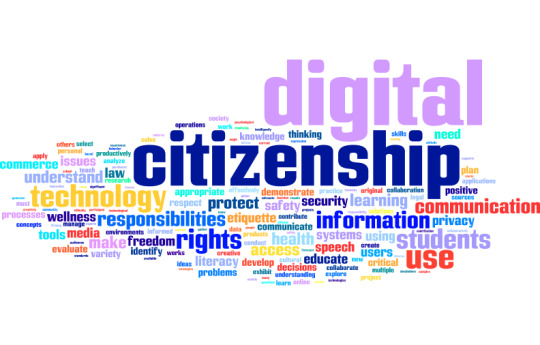
Ribble and Bailey (2007) define the term digital citizenship as the portrayal of actions related to safety, ethics, and responsible usage of media displayed by users and their behaviours. This means that each and every one of us has a digital footprint, the media we consume and share should be followed by the law and be legal as the importance of connecting with others respectively help create an inviting and safe place for people with similiar interests to engage in. However with this much freedom at hand comes with risks as Jæger (2021) notes how the violation of privacy can become a big concern if left unsupervised.
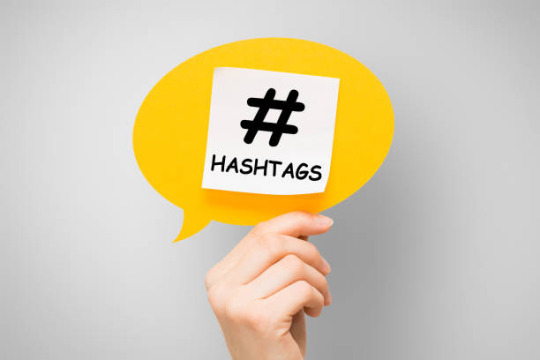
To help users find topics of interests in the digital space, the usage of hashtags is introduced. By definition, a hashtag is ‘a word or phrase preceded by a hash sign (#), used on social media websites and applications, especially Twitter, to identify messages on a specific topic’ (Laucuka, 2018). That is to say, one can search for, navigate, or engage with hashtags, while others can monitor, trace, and retrieve small or large datasets linked to them (Omena, Rabello, Mintz, 2020). Websites such as Elementor (2025) supports this claim as it mentions a 12.6% engagement increase when using hashtags on popular social media app Instagram. In terms of political engagement, Jackson, Bailey, and Welles (2020) note that the increased awareness due to usage of hashtags help bring light to cases related to political debates, social change, and inclusion. In fact, the hashtag activism is considered to be one of the popular approaches and methods that has a significant impact on political and social changes around the world (Ta’amneh, Al-Ghazo, 2021). An example in recent years would be the #BlackLivesMatter as one of the most popular cases was highlighting the reality of police brutality. Cumberbatch and Nicole (2016) call attention to how these hashtags bring in activism from Black Lives Matter helping to increase political engagement as social media is fast-paced and democratizes by acting as a "voice" for minorities to be heard when protesting. This can be seen as Bestvater et al., (2023) highlights the usage of of the hashtag where a total of 10 million users who have used the hashtag, 6.8 million users who have never used it before previously started tweeting about it during the 2020 incident.

Ultimately, digital citizenship is a concept that plays a vital role in our daily routine acting as the backbone for users to gain and spread information both ethically and responsibly. The help of hashtags and social media has fueled the absorption of media being portrayed thus promoting political engagement and activism whether it be a social event or protest. References: Best Hashtags For Instagram In 2025: Boosting Your Reach. (2025). Elementor. https://elementor.com/blog/best-hashtags-for-instagram/ Bestvater, S., Gelles-Watnick, R., Odabaş, M., Anderson, M., & Smith, A. (2023). #BlackLivesMatter Turns 10. Pew Research Center: Internet, Science & Tech; Pew Research Center. https://www.pewresearch.org/internet/2023/06/29/blacklivesmatter-turns-10/ Cumberbatch, P., & Nicole, T. (2016). Hashtag Activism and Why #BlackLivesMatter In (and To) the Classroom. Radical Teacher, 106. doi: https://doi.org/10.5195/rt.2016.302 Jackson, S. J., Bailey, M., & Foucault Welles, B. (2020). #HashtagActivism: Networks of Race and Gender Justice. In direct.mit.edu. The MIT Press. doi https://doi.org/10.7551/mitpress/10858.001.0001 Jæger, B. (2021). Digital Citizenship – A Review of the Academic Literature. Online-First, 14(1-2021), 1–XXI. doi: https://doi.org/10.3224/dms.v14i1.09 Laucuka, A. (2018). Communicative Functions of Hashtags. Economics and Culture, 15(1), 56–62. doi: https://doi.org/10.2478/jec-2018-0006 Omena, J. J., Rabello, E. T., & Mintz, A. G. (2020). Digital Methods for Hashtag Engagement Research. Social Media + Society, 6(3), 205630512094069. doi: https://doi.org/10.1177/2056305120940697 Ribble, M., & Bailey, G. D. (2007). Digital Citizenship in Schools. Ta’amneh, I. M., & Al-Ghazo, A. (2021). The Importance of Using Hashtags on Raising Awareness about Social Issues. International Journal of Learning and Development, 11(4), 10. https://doi.org/10.5296/ijld.v11i4.19139
#mda20009#digital communities#digital citizenship#political engagement#activism#hashtag#blacklivesmatter
0 notes
Text
DISCLAIMER
Disclaimer: Portions of this site and the works within it are being produced with the intention of critique and/or educational use under Australia's 'fair dealing' exceptions to copyright (Section 40 & 41). However, if you feel your IP is being infringed, please contact my service provider (Tumblr) with the appropriate DMCA requests, as I, the single author take full responsibility for the content of this site.
0 notes
Text
Week 5: Digital Community and Fandom: Reality TV Case Study
Lets jump straight into topic, with this being the first Tumblr post I've ever made, I hope you all enjoy it! Technology thrives as the introduction of the first iPhone in 2007 has enabled us to use social media. With that in mind, sometimes users would want a platform to find others with similar interests and connect with one another. The term fandom can be explained as Zhao, Yang, & Tan (2023) describe fandoms as a collective of supporters, making it a group concept. Fuschillo (2020) defines these supporters as people with a deep emotional attachment "expressed through recognition of style and creativity" to both something or someone famous. Online fandom communities are unique in that they offer a digital sanctuary for individuals to converge over mutual interests, ranging from literature and film to gaming and beyond (Parsakia, Jafari, 2023).

Reality TV helps generate engagement and build fandoms and digital communities as Karpenko (n.d.) briefly describes it as a spectrum of shows ranging from dating programs to talk shows with a range that covers widely across various degrees of "editorial manipulation and audience involvement". Reality TV involves real people ostensibly reacting to real-world situations, which allows us to put ourselves in the participants’ shoes and see flashes of ourselves (Joy, 2022). This sort of involvement can be a source of entertainment as it gives us an opportunity to step into the lives and experience the "reality" of these contestants who are being broadcast as few prominent examples of popular Reality TV shows would be Beast Games and Squid Game: The Challenge.


The importance of digital community and presence of fandoms can be seen as the popular franchise Squid Game can be used as an example with the actor Choi Seung-hyun also known as T.O.P and how he revitalised his career. The digital public sphere means the publishing of information, critical publicity, and critical public debate mediated by digital information and communication technologies (Fuchs, 2021). This would mean that digital public spheres have provided a platform for these fandoms and digital communities to thrive, where they can create engaging posts such as memes, videos, discussions, etc. Jia, Li, & Ma (2021) support this claim as the authors mentioned the development of the internet specifically from Web 1.0 to 2.0 which focuses on interactivity correlating to social media platforms as the emergence of it has laid the foundation for the improvement of fan culture. Recent studies from Statista (2025) also showcase the active users on popular social media apps with Instagram totaling a number of 2 billion. Without a doubt, this has also generated the increase of viewership for the reality show and has also left a positive impact on the community as the picture below shows the engagement of Instagram comments.
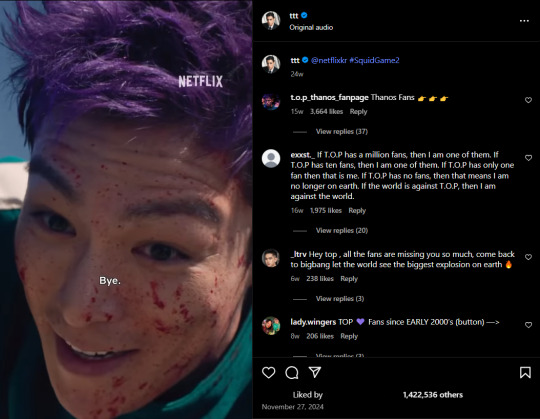
In Summary, digital community and fandom play a vital role in our everyday lives. The globalisation of social media usage has enabled users all around the globe to connect with one another to share engaging content and start online discussions to either make or break something strengthening the digital public sphere. References: Dixon, S. J. (2025). Most Popular Social Networks Worldwide as of February 2025, by Number of Monthly Active Users. Statista. https://www.statista.com/statistics/272014/global-social-networks-ranked-by-number-of-users/ Fuchs, C. (2021). The Digital Commons and the Digital Public Sphere: How to Advance Digital Democracy Today. Westminster Papers in Communication and Culture, 16(1), 9–26. https://doi.org/10.16997/wpcc.917 Fuschillo, G. (2020). Fans, fandoms, or fanaticism? Journal of Consumer Culture, 20(3), 347–365. https://doi.org/10.1177/1469540518773822 Jia, B., Li, J., & Ma, J. (2021). Transformation of Fan Culture Under the Influence of Social Media. Www.atlantis-Press.com; Atlantis Press. https://doi.org/10.2991/assehr.k.211220.375 Joy, J. (2022). It’s Time to Start Taking Reality TV More Seriously. Columbia Magazine. https://magazine.columbia.edu/article/its-time-start-taking-reality-tv-more-seriously Karpenko-Seccombe, T. (n.d.). Communicative and linguistic features of reality show interactions: A case study of Love Island UK. https://pure.hud.ac.uk/ws/portalfiles/portal/41895002/Karpenko_Seccombe_Chapter_Revised_27.06.21.pdf Parsakia, K., & Jafari, M. B. (2023). The Dynamics of Online Fandom Communities: A Qualitative Study on Engagement and Identity. AI and Tech in Behavioral and Social Sciences, 1(3), 4-11. doi: https://doi.org/10.61838/kman.aitech.1.3.2 Zhao, Y., Yang, L., & Tan, G. (2023). Analysis of the Characteristics of Fandom Culture and Its Influence on Group Behavior of College Students. 171, 01032–01032. https://doi.org/10.1051/shsconf/202317101032
1 note
·
View note